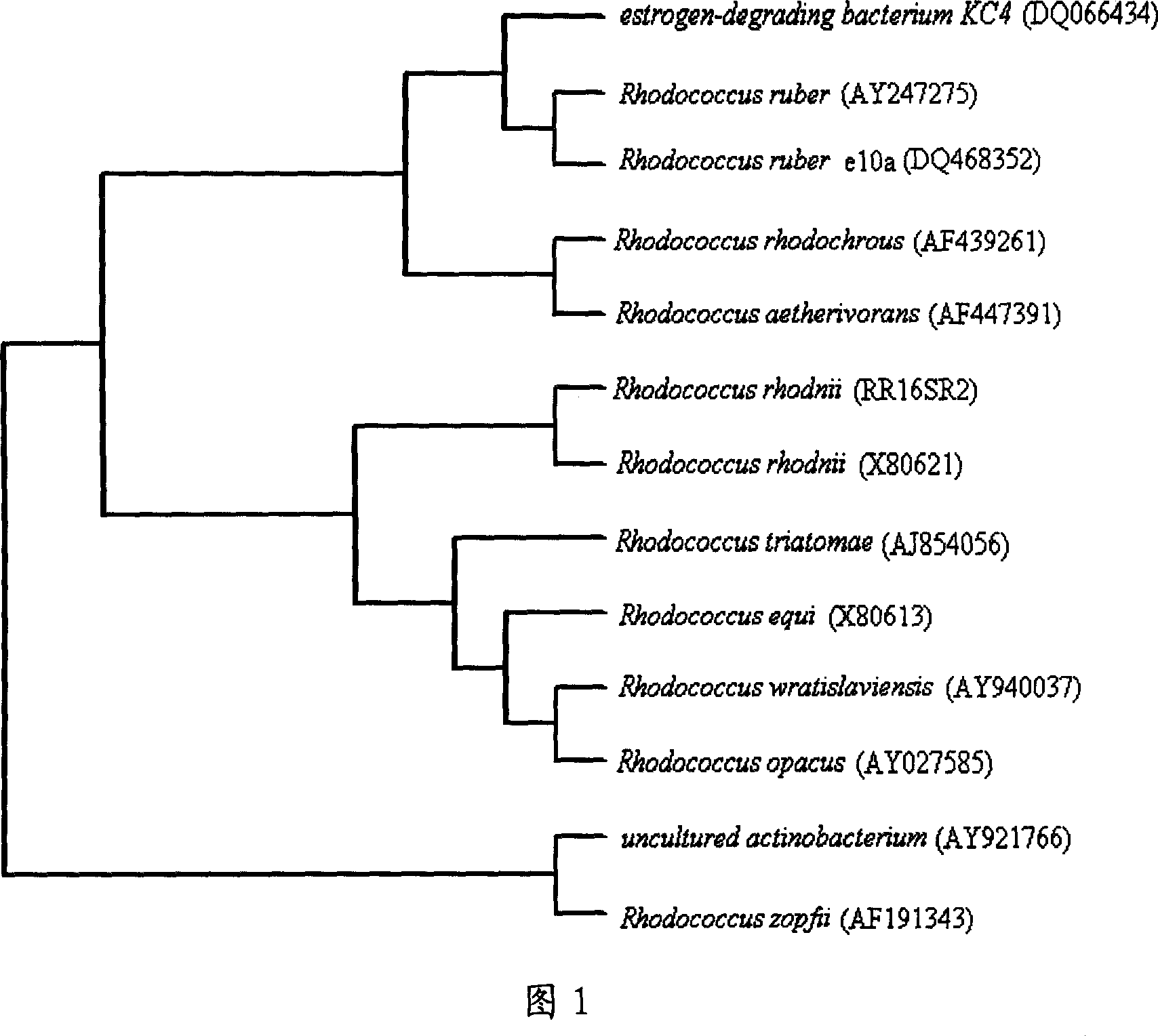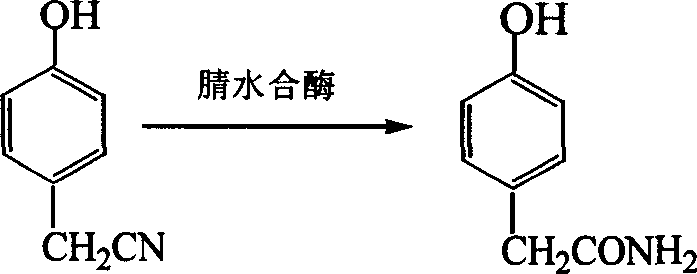Erythro micrococcus ZJB-064 and application thereof
A ZJB-064, Rhodococcus rhodochrous technology, applied in the application, bacteria, biochemical equipment and methods, etc., can solve the problems of large consumption of raw materials, pollution, long cycle and so on
- Summary
- Abstract
- Description
- Claims
- Application Information
AI Technical Summary
Problems solved by technology
Method used
Image
Examples
Embodiment 1
[0046] Enzyme production medium: glucose 20g / L, yeast extract 5g / L, urea 7.5g / L, sodium glutamate 0.75g / L, K 2 HPO 4 0.5g / L, KH 2 PO 4 0.5g / L, Mg 2 SO 4 0.5g / L, FeSO 4 ·7H 2 O10mg / L, CoCl 2 10mg / L, the balance is deionized water, pH 7.0-7.2. Sterilize at 121°C for 20 minutes, inoculate Rhodococcus erythrococcus ZJB-064 strain, and cultivate for 2 days at pH 6.5-7.5 and temperature 28-32°C.
[0047] The culture solution was centrifuged (12000rpm) to collect the cells, washed twice with pH 7.0, 0.1 mol / L sodium phosphate buffer, then centrifuged to collect the cells of Rhodococcus erythrococcus ZJB-064, and frozen for future use.
[0048] Evenly disperse the frozen bacteria stored in the refrigerator in pH 7.0, 0.1mol / L sodium phosphate buffer solution, and prepare bacteria suspensions with wet bacteria concentrations of about 0.05, 0.1, 0.15, 0.2g / mL .
[0049] Add 18mL of sodium phosphate buffer solution (pH7.0, 0.1mol / L) containing substrate concentration of 2.22...
Embodiment 2
[0052] The preparation of Rhodococcus rubrum ZJB-064 thalline was the same as in Example 1.
[0053] Use HAc-NaAc buffer to prepare solutions with pHs of 3.6, 4.0, 4.4, 4.8, 5.2, and 5.6, and use NaH 2 PO 4 -Na 2 HPO 4 The buffer solution was made into solutions with pHs of 6.2, 6.6, 7.0, 7.4, and 7.8, and Gly-NaOH was used to make solutions with pHs of 8.6, 9.0, 9.4, 9.8, 10.4, and 10.6. The concentrations of the three buffers were all 0.1 mol / L. At the same time, a bacterial suspension with a wet bacterial concentration of about 0.1 g / mL was prepared.
[0054] Add 10mL of buffer solutions with various pH values to the transformation solution, then add 8mL of nitrile aqueous solution with a substrate concentration of 12.5g / L, and then add 2mL of bacterial cell suspension, so that the final concentration of the substrate in the transformation solution is 5g / L. L, the OD value of the conversion solution was determined to be 4.186. As the buffer solution in the conversio...
Embodiment 3
[0057] The preparation of Rhodococcus rubrum ZJB-064 thalline was the same as in Example 1.
[0058] Nitrile buffer solutions containing PHN of 5.555, 11.111 and 22.222g / L were prepared with phosphate buffer (pH7.0, 0.1mol / L), and a bacterial suspension containing 0.1g / mL of bacteria was prepared at the same time. Add 18 mL of prepared nitrile buffer solution to the 50 mL ground-mouth Erlenmeyer flask, and then use a pipette gun to add 2 mL of bacterial suspension to each Erlenmeyer flask at the same time, so that the final concentration of the substrate in the transformation solution is 5 g / L, 10g / L and 20g / L, the final concentration of wet bacteria is 0.01g / mL, and the transformation solution with different substrate concentrations is made in two parallels. Then put it into a water-bath shaker at 30°C for transformation, the shaker speed was 150rpm, 1mL was sampled every 20min, centrifuged immediately, filtered, and the transformation was tracked by HPLC.
[0059] When the ...
PUM
| Property | Measurement | Unit |
|---|---|---|
| melting point | aaaaa | aaaaa |
Abstract
Description
Claims
Application Information
 Login to View More
Login to View More - R&D
- Intellectual Property
- Life Sciences
- Materials
- Tech Scout
- Unparalleled Data Quality
- Higher Quality Content
- 60% Fewer Hallucinations
Browse by: Latest US Patents, China's latest patents, Technical Efficacy Thesaurus, Application Domain, Technology Topic, Popular Technical Reports.
© 2025 PatSnap. All rights reserved.Legal|Privacy policy|Modern Slavery Act Transparency Statement|Sitemap|About US| Contact US: help@patsnap.com


